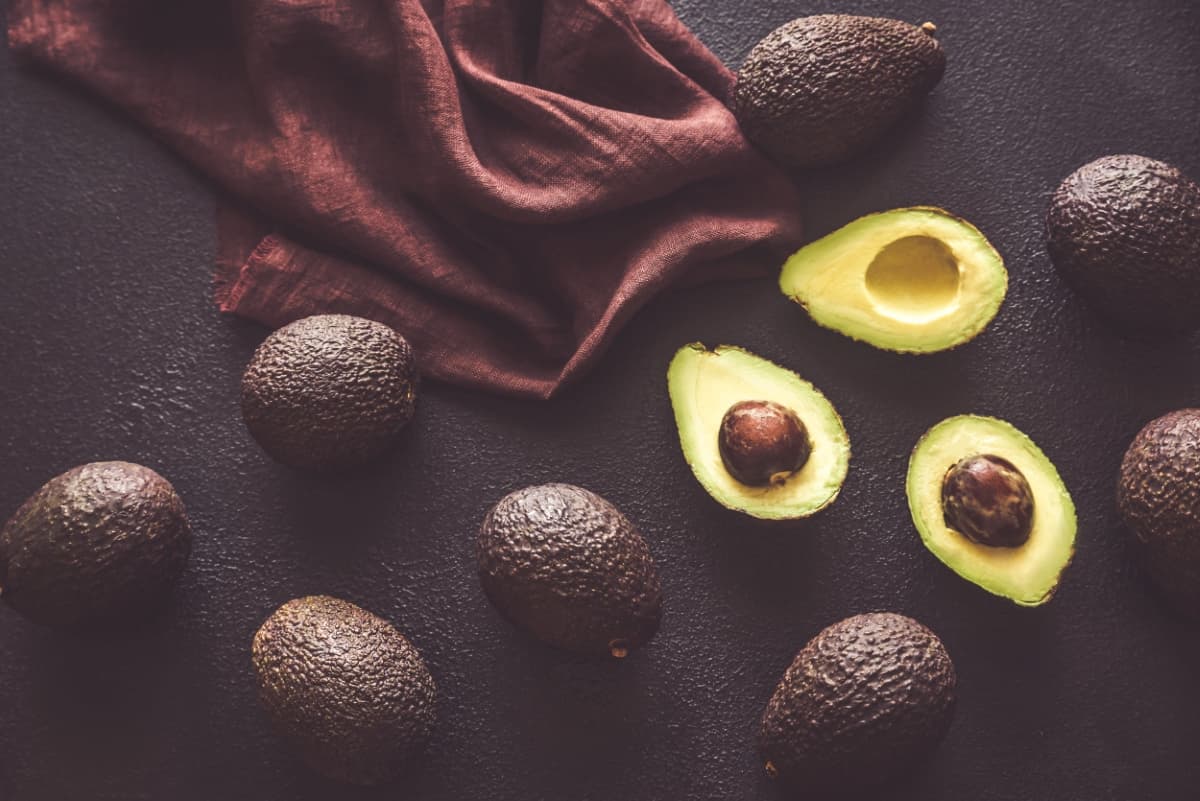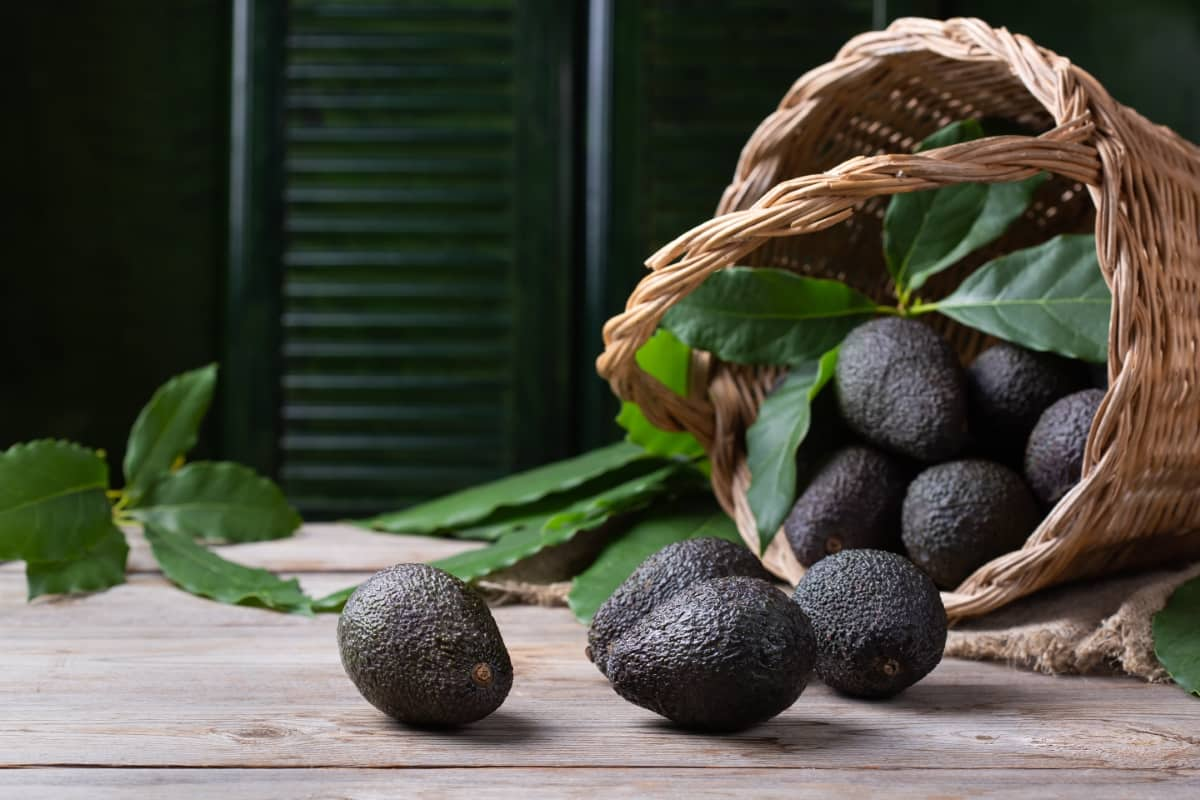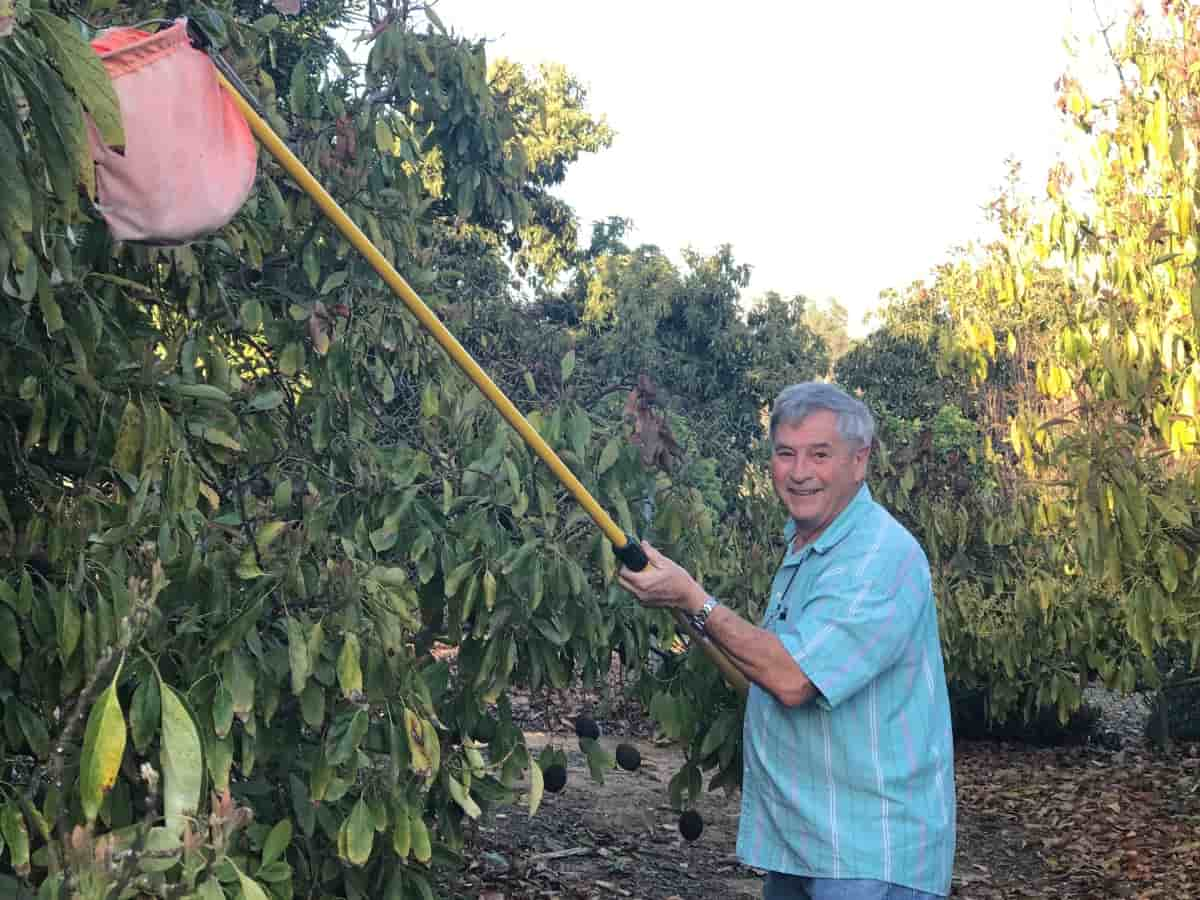Hass avocados are prized for their creamy texture, rich flavor, and versatility in culinary applications. You can have a bountiful harvest of these delicious fruits right in your backyard with proper care. In this avocado planting guide, we’ll cover everything you need to know to successfully grow Hass avocados, from preparing the soil to planting Hass avocados, nurturing, and harvesting your crop. We’ll also discuss common pests and diseases and how to overcome them, as well as tips for optimizing yield and maintaining the health of Hass avocado trees.

Growing Hass Avocado
Overview of Hass Avocado
| Appearance | Veined, glossy green leaves and nubbly skin that turns black when picked |
| Hass avocado tree height | 15 to 20 feet |
| Hardiness Zones | USDA 9-11 outdoors, 4-11 indoors in a container |
| Hass avocado taste | Subtly nutty flavour with a hint of sweetness |
| Hass avocado cold tolerance | -2.5°C |
| Hass avocado season | May through to January |
| Soil composition | Loose, sandy, or loamy, well-draining with a pH of 6.5 or lower |
| Lifespan | 200-400 years |
Choosing the Right Location for Hass Avocado Tree
Select a location for your Hass avocado tree that receives full sun, preferably with protection from strong winds. Ensure the soil is well-draining, sandy-loam with a slightly acidic to neutral pH (6.0-7.0). Avoid locations prone to waterlogging, as avocados are sensitive to root rot. Consider planting Hass avocado on a slight slope to aid drainage. Adequate space for the tree to spread its roots and canopy is crucial for optimal growth. Additionally, proximity to a water source for irrigation is beneficial.
Planting Hass Avocado Seeds
For planting Hass Avocado, start by removing the seed from a ripe avocado and rinsing it under water to remove any remaining fruit. Insert toothpicks into the seed to suspend it halfway in a glass of water, with the broader end facing downward. Place the glass in a sunny location and change the water every few days. After about 2-6 weeks, roots should sprout, followed by a stem and leaves.
Once the avocado seedling has grown a few inches tall, transplant it into a pot filled with well-draining soil, leaving the top half of the hass avocado seed exposed. Water the seedling regularly and ensure it receives plenty of sunlight. Avocado trees require spacing of about 20 to 30 feet apart when planted outdoors to accommodate their mature size. If planting multiple trees, space them accordingly.
Watering Tips for Young Hass Avocado Plants
For young plants, ensure soil moisture by watering deeply, allowing the topsoil to dry between watering. Aim for about 1-2 inches of water per week, adjusting based on weather conditions. Mature trees have deeper root systems; water them less frequently but deeply to encourage root growth. Once established, water mature trees every 1-2 weeks, providing around 2-3 inches of water. Monitor soil moisture regularly, adjusting watering frequency based on climate and soil conditions.
In case you missed it: Growing Jan Boyce Avocados: A Comprehensive Guide for Home Gardeners

Best Fertilizers for Hass Avocado Trees
For Hass fertilizing, opt for a balanced NPK ratio fertilizer, such as 10-10-10 or 8-3-9, providing essential nutrients without excess nitrogen. Organic options like compost or fish emulsion are also beneficial. Regarding quantity, young trees under three years may require ¼ to ½ pounds of fertilizer per application, gradually increasing as they mature.
Apply fertilizer evenly in a ring around the tree, extending beyond the drip line. Avoid fertilizing during the first year, then apply three to four times a year during the Hass avocado growing season, spacing applications evenly. Water thoroughly after fertilizing to ensure nutrients reach the roots.
Pruning Techniques for Hass Avocado Tree
Pruning avocado trees involves trimming avocado trees during late winter or early spring before new growth emerges. Start by removing dead, diseased, or damaged branches and cutting them back to healthy tissue. Next, thin out crowded areas to improve air circulation and sunlight penetration, which encourages fruit production. Trim your Hass avocado branches that are crossing or rubbing against each other. Always use sharp, clean tools and sanitize between cuts to prevent disease spread.
Hass Avocado Pollination
Avocado trees are typically self-pollinating, but they can also benefit from cross-pollination for optimal fruit production. Hass avocado trees can set fruit through self-pollination, although the yield may be lower compared to when cross-pollination occurs. Cross-pollination, which means the transfer of pollen from one avocado tree to another, can increase fruit set and yield significantly by enhancing genetic diversity and promoting more efficient pollination. Planting Hass avocados near each other can facilitate cross-pollination and improve overall fruit production.
Identify and Treat Pests in Hass Avocado Trees
Thrips are a significant pest problem in orchards globally, particularly in avocado cultivation, where they cause scarring on the fruit. Additionally, avocado orchards face a range of other pests that pose primary concerns, including the Western Avocado Leafroller, Avocado Brown Mite, Greenhouse Thrips, Omnivorous Looper, Persea Mite, Polyphagous Shothole Borer, Kuroshio Shothole Borer, and Sixspotted Mite.
Implement integrated pest management practices. Utilize biological control agents like predatory mites and parasitic wasps. Regularly inspect plants for infestation signs and promptly remove affected foliage. Use insecticidal soaps or oils for aphids and whiteflies. Employ physical barriers for cutworms and leaf miners. Implement cultural practices such as proper sanitation and plant spacing to deter pest populations.
Sunlight Needs for Hass Avocados
Hass avocados require full sunlight for optimal growth and fruit production. Adequate sunlight exposure ensures vigorous photosynthesis, which is essential for healthy leaf, flower, and fruit development. Insufficient sunlight can lead to sparse foliage, reduced flowering, and poor fruit set. Aim for at least 6 hours of sunlight daily, although more is beneficial for maximizing yield and quality in Hass avocado trees.
Winter Care for Hass Avocado Trees
During winter, protect Hass avocado trees by mulching around the tree’s base to retain soil moisture and insulate roots from cold. Shield the tree from frost by covering it with a frost cloth or blanket on freezing nights. Water sparingly, ensuring the soil is not waterlogged but remains slightly moist.
In case you missed it: Facts About Bacon Avocado: Exploring Cultivation to Culinary Uses

Prune dead, diseased, or damaged branches to promote healthy growth in spring. Avoid fertilizing during winter, as it can stimulate tender growth vulnerable to frost damage. Monitor weather forecasts and adjust Hass avocado care accordingly.
When and How to Pick Hass Avocados
Hass avocados are best harvested when fully mature but still firm, typically between late spring and early fall. Check for dark, pebbly skin with a slight give when gently squeezed. Avoid avocados with blemishes or overly soft spots. To pick, gently twist and pull the fruit from the tree, ensuring the stem remains intact. Let harvested avocados ripen at room temperature for a few days until they yield slightly to pressure, indicating readiness to eat.
Yield of Hass Avocados per Tree
With proper nurturing, the trees exhibit high productivity, boasting an extended harvesting window. Expect an average yield of approximately 30 fruits per tree within two to three years, totaling around 300 to 400 kilograms per acre. By the fourth year, individual trees can yield between 200 to 500 fruits each tree.
Growing Hass Avocado in Pots
- For growing avocados at home in pots, start with a large container with drainage holes.
- Fill it with well-draining soil mixed with compost. Plant a young avocado tree, ensuring the soil is moist but not soggy.
- Place the pot in a sunny location with at least 6 hours of sunlight daily.
- Regularly water your Hass Avocado, allowing the soil to dry slightly between waterings.
- Fertilize with a balanced fertilizer during the Hass avocado growing season.
- Prune to encourage a bushy shape. Protect from frost by bringing it indoors or covering it.
- With proper avocado tree maintenance, your potted Hass avocado tree can thrive and produce delicious fruit within a few years.
In case you missed it: How to Increase Avocado Fruit Size: Optimization for Large Avocado Fruit Growth

Conclusion
Growing Hass avocados can be a rewarding and fruitful experience, but it requires careful attention to detail and patience. By following these steps along with proper care, you can successfully grow your own Hass avocados and enjoy the delicious fruits straight from the garden.
- Feed Your Flock for Less: Top 10 Tips to Save on Chicken Feed
- Ultimate Guide to Ossabaw Island Hog: Breeding, Raising, Diet, and Care
- Hatching Answers: The Top 10 Reasons Your Chickens Aren’t Laying Eggs
- Eggs and Economics: Breaking Down the Cost of Raising Backyard Chickens
- Defend Your Greens: Proven Methods to Keep Iguanas Out of Your Garden
- Ultimate Guide to Cinnamon Queen Chicken: A Comprehensive Guide for Beginners
- Ultimate Guide to California Tan Chicken: Breeding, Raising, Diet, Egg-Production and Care
- Ultimate Guide to Marsh Daisy Chicken: Breeding, Raising, Diet, and Care
- 10 Types of Chicken Farming Businesses You Can Start for Profits